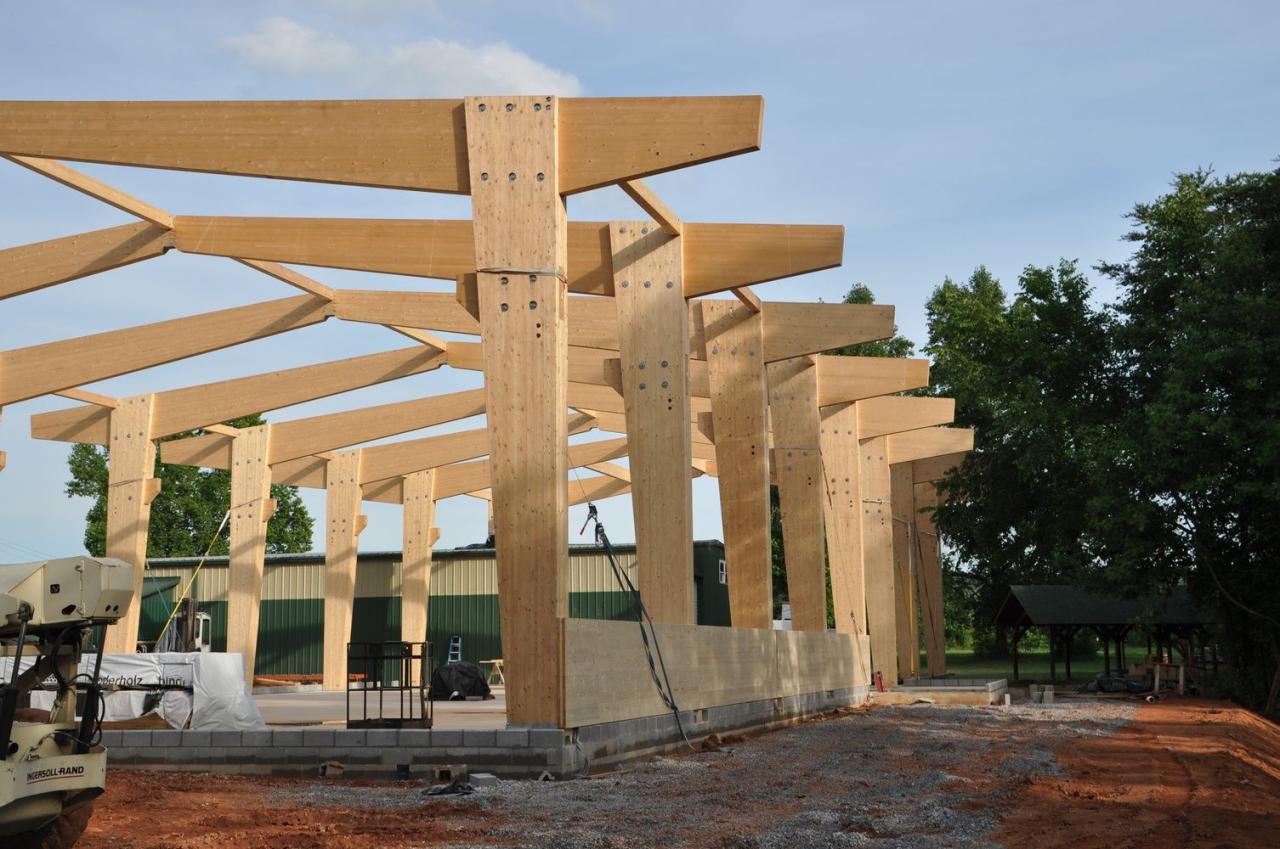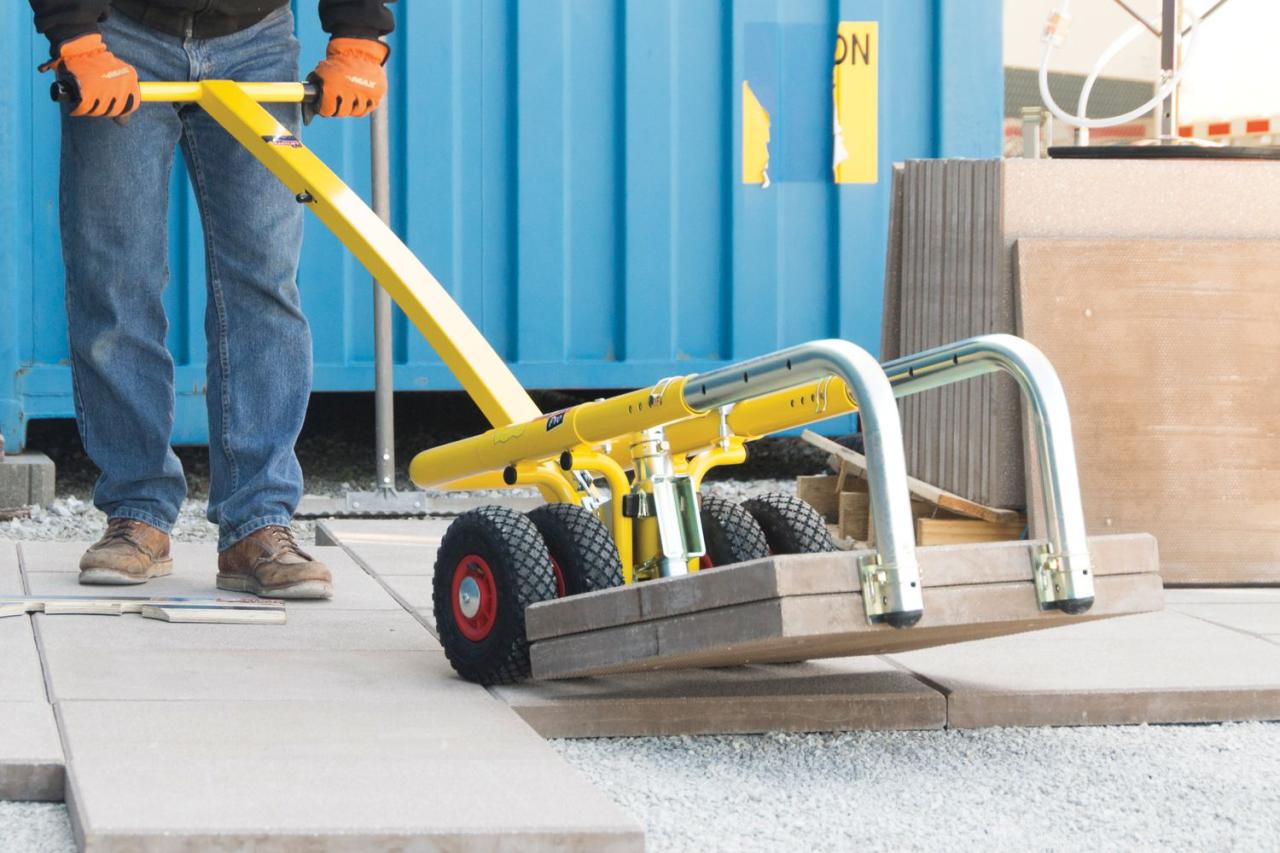In today’s fast-paced world, construction is experiencing an unprecedented transformation driven by innovative building tools. These revolutionary advancements are changing the way structures are designed, built, and maintained, resulting in safer, more efficient, and environmentally friendly construction practices. As technology continues to evolve, the integration of smart systems, automation, and advanced materials is pushing the boundaries of traditional construction methods. This article examines the breakthroughs that are redefining the construction landscape, explains their benefits, and highlights how these tools are revolutionizing the industry.
The construction industry, long recognized for its reliance on traditional methods, is embracing disruptive innovation. Revolutionary building tools are no longer confined to blueprints and manual labor; instead, they are transforming every stage of the construction process. From computer-aided design (CAD) and 3D printing to drones and robotics, modern construction now features a blend of digital ingenuity and hands-on craftsmanship.
This comprehensive guide will provide an in-depth look at the transformative building tools changing construction. We will explore their technological underpinnings, practical applications, and potential future impacts, ensuring that both construction professionals and enthusiasts can appreciate the changes shaping modern infrastructure.
The Evolution of Construction Tools
Historically, construction evolved from primitive tools like hammers and chisels to the introduction of power tools, heavy machinery, and modern computerized systems. Today, the construction sector is on the verge of a technological revolution driven by digital innovation and smart automation.
A. From Manual Labor to Digital Precision
- A. Early Beginnings: Early construction was based on manual labor, with craftsmen relying on simple tools and oral instructions. Knowledge was transferred generationally, and structures were built using basic methods honed over time.
- B. Industrial Revolution: The introduction of steam engines and mechanized equipment during the Industrial Revolution revolutionized building practices. Power tools emerged, setting the stage for larger and more complex constructions.
- C. Modern Era: In recent decades, computer-aided design (CAD) and building information modeling (BIM) have streamlined planning and execution, enhancing accuracy and reducing error margins. Today’s revolutionary tools represent the next phase of innovation, combining the precision of digital systems with the power of automation.
Breakthrough Technologies Transforming Construction
Advancements in technology have unlocked numerous possibilities for transforming construction. These breakthrough tools and systems are not only increasing efficiency but also improving safety standards and reducing waste. Let’s explore some of the most significant innovations:
1. Computer-Aided Design (CAD) and Building Information Modeling (BIM)
CAD and BIM technologies have revolutionized the planning and design aspects of construction:
- A. Enhanced Visualization: These digital tools allow architects and engineers to create detailed, three-dimensional models of a building. This enhanced visualization helps stakeholders understand a project’s scope and design intricacies before construction begins.
- B. Improved Collaboration: BIM integrates data from various disciplines, such as architecture, structural engineering, and MEP (mechanical, electrical, plumbing), into one unified model, fostering better collaboration and reducing conflicts during the construction phase.
- C. Error Reduction: By simulating the construction process virtually, CAD and BIM help identify potential issues early on, minimizing mistakes and unforeseen costs.
- D. Sustainability Planning: These systems also assist in designing energy-efficient and sustainable buildings by optimizing material use and reducing the structure’s environmental impact.
2. 3D Printing and Additive Manufacturing
3D printing has emerged as a groundbreaking technology in the construction realm, offering unparalleled flexibility and efficiency:
- A. Rapid Prototyping: This technology allows for the creation of precise prototypes and structural components within hours, accelerating the design and approval process.
- B. Customization: 3D printing enables the production of complex and customized building elements that traditional manufacturing methods cannot achieve, catering to specific architectural styles and functional requirements.
- C. Cost Efficiency: By reducing material waste and shortening production timelines, 3D printing can lower construction costs significantly, making quality construction more accessible.
- D. Eco-Friendly Practices: The technology often utilizes recycled materials or sustainable resources, contributing to environmentally responsible construction practices.
3. Robotics and Automation
Robotics and automated systems are rapidly gaining traction in construction sites, enhancing productivity and safety:
- A. Robotic Bricklaying: Robots are now capable of laying bricks with precision and consistency, drastically improving build speed and quality. These machines can work around the clock, ensuring timely project completion.
- B. Autonomous Construction Vehicles: Driverless machinery, such as bulldozers, excavators, and cranes, is becoming more common. These vehicles are equipped with advanced sensors and artificial intelligence to operate safely on busy construction sites.
- C. Drone Surveillance: Drones offer aerial views of construction sites, providing real-time data on progress, safety compliance, and potential hazards. Their ability to capture high-resolution images and videos aids project managers in making informed decisions.
- D. Robotic Assembly: In addition to laying bricks, robots assist in assembling modular components and prefabricated elements, ensuring that assembly lines are efficient and labor-intensive tasks are minimized.
4. Smart Sensors and IoT Integration
The integration of smart sensors and the Internet of Things (IoT) has begun to reshape construction management:
- A. Real-Time Monitoring: Sensors integrated into construction sites enable real-time monitoring of structural integrity, material temperatures, and environmental conditions. This constant feedback helps in identifying risks before they escalate.
- B. Predictive Maintenance: IoT-enabled systems can predict equipment failures and schedule maintenance activities, thereby reducing unplanned downtime and extending the lifespan of construction machinery.
- C. Enhanced Safety Protocols: Wearable sensors monitor worker health and environmental hazards, ensuring that safety guidelines are strictly followed and promptly addressing any incidents.
- D. Data-Driven Decisions: The wealth of data generated by connected devices facilitates comprehensive analytics. This data can optimize resource allocation, scheduling, and overall project management.
5. Augmented Reality (AR) and Virtual Reality (VR)
AR and VR technologies offer immersive experiences that transform both planning and on-site construction processes:
- A. Immersive Training: AR and VR platforms provide realistic training simulations for construction workers, enabling them to practice complex procedures in a controlled, virtual environment without the risk of accidents.
- B. Design Interaction: Architects and clients can explore virtual models of projects, offering an immersive tour of a building before any physical work commences. This interactive approach promotes better design decisions and client satisfaction.
- C. On-Site Assistance: AR headsets can overlay digital information onto physical structures, guiding workers through intricate assembly processes and reducing errors.
- D. Remote Collaboration: VR conferencing allows teams from across the globe to meet virtually, discuss plans, and troubleshoot issues in a shared, immersive environment, streamlining communication and decision-making.
How Revolutionary Tools Are Changing the Construction Workflow
The introduction of these advanced building tools is reshaping construction workflows in several critical ways. The integration of technology enhances precision, reduces manual labor, and introduces greater accountability and efficiency. Here’s a closer look:
A. Pre-Construction and Design Phase
In the pre-construction phase, revolutionary tools are used to meticulously plan and design projects. With CAD and BIM, architects and engineers can simulate every detail of a building, reducing the need for revisions during the actual construction. The use of VR and AR enhances client engagement, providing a realistic preview of the final product. As a result, stakeholders are better aligned, and potential design flaws can be addressed before any physical work begins.
B. Construction Phase
During construction, automation, robotics, and smart sensors become the backbone of operational efficiency. Key tasks such as material handling, structural assembly, and onsite monitoring benefit immensely from these technologies. Drones and IoT devices provide real-time updates and data, allowing project managers to maintain oversight and swiftly respond to challenges. Robotic machinery improves precision in repetitive tasks while enhancing overall safety by reducing human exposure to high-risk operations.
C. Post-Construction and Maintenance
Once a project is completed, revolutionary tools continue to offer value through ongoing maintenance and facility management. IoT sensors enable continuous monitoring of structural health, detect potential issues early, and guide predictive maintenance practices. Digital twin technology—virtual replicas of physical assets—allow building managers to simulate maintenance scenarios and optimize resource use. Ultimately, these practices extend the lifespan of structures and minimize long-term maintenance costs.
Advantages of Implementing Revolutionary Building Tools
Adopting advanced construction technology yields multiple benefits across various dimensions of a project. Here are some of the primary advantages:
A. Increased Efficiency
Modern construction tools streamline processes, reduce manual workloads, and expedite project timelines. Automation and robotic systems operate continuously, ensuring that construction proceeds at an accelerated pace without sacrificing quality or safety.
B. Enhanced Safety
A significant benefit of integrating smart technologies is the improvement in safety standards. Automated systems reduce the risk of human error, while real-time monitoring via sensors and drones ensures that potential hazards are promptly identified and mitigated. This focus on safety minimizes accidents, protecting both the workforce and the surrounding community.
C. Improved Quality and Precision
With the advent of technologies like 3D printing and robotic assembly, construction projects benefit from enhanced precision and consistency. Automated quality control processes lead to fewer errors, resulting in sturdier, longer-lasting structures.
D. Cost Savings
Although the initial investment in revolutionary building tools may be high, the long-term cost savings are substantial. Reduced labor costs, minimized waste, and shorter project timelines contribute to significant financial benefits over the lifecycle of a project. Additionally, efficient resource management and predictive maintenance lower overall operational costs.
E. Sustainability
Revolutionary building tools promote environmentally friendly practices. Advanced design software optimizes resource utilization and energy efficiency, while 3D printing reduces material waste. Smart sensors and IoT integration facilitate eco-friendly maintenance, making sustainability a core aspect of modern construction.
F. Scalability
As construction projects grow in complexity, scalable technology solutions can be easily integrated to manage increased demands. Whether it’s expanding BIM models for urban development or deploying additional drones on large sites, these advanced tools offer the flexibility needed to accommodate diverse project scopes.
Challenges and Considerations
Despite the many benefits, integrating revolutionary building tools into construction is not without challenges. Stakeholders must navigate these obstacles to achieve seamless implementation.
A. Initial Investment Costs
High upfront costs can be a barrier, particularly for smaller firms. The adoption of cutting-edge technology demands significant capital for equipment, training, and integration into existing workflows. However, many companies view this as a long-term investment that yields future savings.
B. Training and Skill Development
The effective use of advanced construction tools requires specialized skills and training. Workers and managers must be educated on new systems, and continuous training programs should be implemented to keep pace with technological advancements. Investment in human capital is essential for maximizing the potential of these innovations.
C. Cybersecurity Concerns
With increased reliance on digital technologies, cybersecurity becomes a critical concern. Protecting sensitive data from breaches requires robust security protocols and constant vigilance. Construction firms must prioritize cybersecurity to protect both proprietary information and operational integrity.
D. Integration with Traditional Methods
Blending new technologies with existing construction practices can be complex. Legacy systems may need to be overhauled or upgraded to accommodate modern innovations. A strategic approach to integration—phased implementation, pilot programs, and close collaboration among stakeholders—can ease the transition.
E. Regulatory and Legal Issues
As technologies such as drones, autonomous vehicles, and AI-driven systems become prevalent, regulatory frameworks may struggle to keep pace. Construction firms must comply with evolving regulations, and policymakers need to develop guidelines that ensure safety without stifling innovation.
Strategies for Successful Implementation
For construction firms looking to capitalize on revolutionary building tools, careful planning and strategic execution are paramount. Here are key strategies to consider:
A. Evaluate Needs and Set Clear Objectives
Before investing in new technology, assess your firm’s current capabilities and identify areas that need enhancement. Define clear objectives, whether they pertain to increased efficiency, improved safety, or cost reduction. This evaluation will help prioritize technology investments and guide implementation.
B. Invest in Training and Development
An informed workforce is a critical asset. Develop comprehensive training programs to ensure that employees are proficient in using new tools. Consider partnering with technology providers or educational institutions to deliver specialized courses and workshops.
C. Foster a Culture of Innovation
Encourage a mindset that embraces change and innovation. Leadership should promote an environment where new ideas are welcomed and experimentation is supported. A culture of innovation not only improves adaptation to technology but also drives continuous improvement across the organization.
D. Collaborate with Experts and Vendors
Leverage the expertise of vendors and industry experts during the integration phase. Consultants can help tailor solutions to your specific needs, ensuring that technology aligns with existing practices and future growth. Regular communication with providers also aids in troubleshooting and upgrading systems as necessary.
E. Monitor, Evaluate, and Adapt
Implementing revolutionary tools is an ongoing process. Establish key performance indicators (KPIs) to measure progress and assess the impact on operations. Regular review meetings, data analysis, and feedback loops will facilitate timely adjustments and continuous improvement.
The Future of Construction Technology
Looking ahead, the construction industry’s future is closely intertwined with the evolution of technology. Several trends are expected to further redefine the sector in the coming years:
A. Greater Integration of Artificial Intelligence
AI-driven systems will continue to enhance predictive maintenance, risk management, and operational efficiency. As machine learning algorithms improve, AI will predict potential issues before they arise, ensuring smoother workflows and reduced downtime.
B. Expansion of Virtual and Augmented Reality Applications
AR and VR will become mainstream tools for training, design, and client engagement. As the technology becomes more accessible, expect widespread adoption in project visualization, remote collaboration, and interactive maintenance manuals.
C. Sustainable and Smart City Development
The construction of smart cities will rely heavily on technologies that integrate renewable energy solutions, sustainable building practices, and real-time data monitoring. Revolutionary tools will be pivotal in meeting the demands of rapid urbanization while minimizing environmental impact.
D. Modular and Prefabricated Construction
Prefabrication and modular construction methods, supported by robotics and advanced manufacturing, will continue to gain popularity. These techniques drastically reduce on-site construction time, lower costs, and improve quality control.
E. Blockchain for Transparency and Accountability
Blockchain technology is poised to revolutionize supply chain management and contract enforcement in construction. By ensuring transparent record-keeping, blockchain can prevent fraud, streamline payments, and increase accountability across all project stages.
Conclusion
The construction industry is undergoing a dramatic metamorphosis thanks to revolutionary building tools that are reshaping traditional practices. From enhanced design with CAD/BIM and disruptive 3D printing to the deployment of robotics, drones, and smart sensors, every stage of the construction process is becoming smarter, faster, and safer. As these technologies evolve, they not only boost productivity and reduce costs but also herald a new era of sustainability and innovation.
Organizations that adapt to these changes by investing in technology, fostering a culture of continuous learning, and rethinking conventional methods will enjoy a competitive edge. Embracing these revolutionary tools is not merely a trend—it is an essential step toward a future where construction is efficient, environmentally responsible, and aligned with the demands of modern society.
In summary, this complete guide has explored the transformative impact of modern building tools on the construction industry. By understanding their benefits and challenges, and by strategically integrating these innovations into daily operations, construction professionals can drive growth, enhance safety, and deliver superior projects. The journey toward a high-tech construction future is underway, and those who lead this change today will shape a better tomorrow.
















